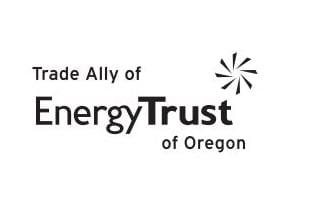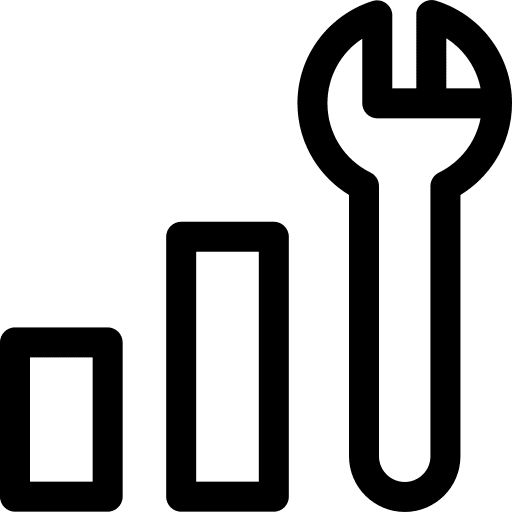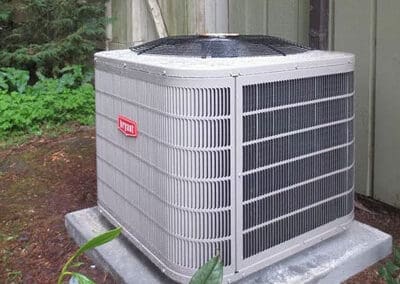Efficiency Heating & Cooling
Furnace Replacement Services in Portland, Oregon
Get top-notch furnace replacement services at competitive prices! Efficiency Heating & Cooling ensures expert installation and reliable heating solutions for your home.
⏰ Don’t Wait in the Cold! Portland’s Reliable Furnace Installation Experts
Expertise
Our certified technicians bring years of experience and skill to ensure your AC installation is seamless and efficient.
Efficiency
Our premium AC systems help you enjoy lower energy bills and optimal cooling performance with smart technology.
Comfort
Our advanced AC solutions enhance indoor comfort and air quality, tailored to meet your home’s cooling needs.
❄️ Winter Furnace Installation or Replacement Special | Portland’s Best Rates
Is It Time To Replace Your Home Furnace?
While regular maintenance is essential for keeping your heating system in top shape, there comes a time when replacement becomes the most effective solution.
Many Portland homeowners are recognizing the benefits of upgrading to a new furnace. A modern furnace replacement ensures that your home stays warm and energy-efficient throughout Portland’s chilly winters.
Contact us today to learn more about our furnace replacement services.
Greater Portland Furnace Replacement
Experts for Homes & Businesses
🏠 Portland’s Most Trusted Furnace Installation Team | Same-Day Service Available
Read Real Reviews About Our Furnace Replacement Solutions in Portland Metro
🌟 Looking for Local Furnace Installation? Portland’s Top-Rated Team is One Call Away!
FAQs about Furnace Repair and Maintenance
Q: What are common signs that my furnace needs repair?
A: Unusual noises, inconsistent heating, yellow pilot light, frequent cycling, a spike in energy bills, visible damage, water leaks, and burning or gas smells.
Q: How often should I schedule furnace maintenance?
A: At least once a year, ideally in the fall. We offer a special price of $69 for furnace tune-ups for a limited time!
Q: What is the average cost for furnace repair in Portland?
A: $150 to $650, but it can vary. We offer free estimates.
Q: Can I do DIY repairs on my furnace?
A: We strongly advise against attempting complex repairs yourself. It’s best to rely on a qualified HVAC technician.
Q: How can I improve my furnace’s energy efficiency?
A: Regular maintenance, change air filters, seal ductwork leaks, ensure proper insulation, consider a high-efficiency furnace, and use a programmable thermostat.
Q: What should I do if I smell gas near my furnace?
A: Evacuate your home immediately and contact your gas company and a qualified HVAC technician from a safe distance.
Q: What is involved in a professional furnace tune-up?
A: Inspection and cleaning of all major components, including burner assembly, heat exchanger, thermostat calibration, moving parts lubrication, electrical connections, venting system, airflow, temperature rise, safety controls, gas pressure and connections (for gas furnaces), and air filter change (if needed).
Q: Do you offer emergency furnace repair services?
A: Yes, we offer 24/7 emergency furnace repair services throughout the Greater Portland area.
Q: How long does a typical furnace last?
A: A well-maintained gas furnace can last 15-20 years, while an electric furnace may last 20-30 years.
Q: How much does a new furnace cost to install?
A: For a typical Portland-area home, expect to invest between $4,000 and $10,000 for a new gas furnace, including installation. We offer free estimates, financing options, and can help you determine what rebates you qualify for.
Trusted Among Portland’s Top Locally-Owned Furnace Replacement Companies
Upgrade your heating system with confidence by choosing our expert furnace replacement services, designed to boost efficiency and comfort in both residential and commercial properties.
Whether you’re replacing an outdated furnace or upgrading to a more energy-efficient model, our experienced technicians ensure a seamless and reliable installation process.
Contact us today to schedule your replacement or get answers to any questions about enhancing your heating system’s performance.
🔧 Expert Furnace Replacement in Portland OR | 24/7 Emergency Services
More Information
Signs Your Furnace Needs Replacing
It’s important to know when your furnace might need replacing. Here are some signs that it might be time to look into a replacement:
| Sign | Description |
|---|---|
| Age of the Furnace | If your furnace is older than 15 years, it may be less efficient and more prone to breakdowns. |
| Frequent Repairs | If you’re constantly calling for repairs, a new furnace might be more cost-effective in the long run. |
| Inconsistent Heating | If some rooms are warm while others are cold, your furnace may not be distributing heat effectively. |
| Rising Energy Bills | An unexpected increase in your energy bills could signal that your furnace is losing efficiency. |
| Strange Noises or Smells | Unusual sounds or smells can indicate a problem with your furnace that may require replacement. |
Regular furnace inspections can help catch problems early and might show that residential furnace replacement is needed.
Types of Furnaces: Gas, Electric, Propane
When you need a new heating system, it helps to know what types of furnaces are available.
| Furnace Type | Description |
|---|---|
| Gas Furnaces | Common and often cheaper to run than electric ones. They require proper ventilation and can use natural gas or propane. |
| Electric Furnaces | Easier to set up but can be more expensive to operate depending on local electricity rates. |
| Propane Furnaces | Useful in areas without natural gas lines. They function like gas furnaces but typically have higher fuel costs. |
Each type comes with its own pros and cons for installation and costs over time.
Choosing the Right Furnace Size (BTU)
Getting the right size for your furnace is crucial. It’s measured in BTUs (British Thermal Units). A unit that’s too big will cycle on and off frequently, leading to uneven temperatures and premature wear and tear. If it’s too small, it won’t heat your home adequately during cold weather.
To find out what size you need, consider these factors:
| Factor | Description |
|---|---|
| Square Footage | The size of the area you need to heat. |
| Insulation | How well-insulated your home is impacts the required heating capacity. |
| Ductwork Condition | The condition of your ductwork affects airflow and heating efficiency. |
An HVAC professional can help ensure you get the right size for your central heating system.
AFUE Ratings & Energy Efficiency
The Annual Fuel Utilization Efficiency (AFUE) rating indicates how effectively a furnace converts fuel into heat over a year. Higher percentages mean better efficiency, resulting in lower energy bills.
Investing in high-efficiency furnace replacements can help save money and reduce greenhouse gas emissions from heating.
Choosing energy-efficient heating solutions can boost comfort at home while being kinder to our planet in the long run.
Furnace Replacement Cost Portland Oregon
If you need to replace your furnace in Portland, you might wonder about the costs involved. The replacement cost can range widely. On average, homeowners typically pay between $3,000 and $7,500 for new furnace installation. This amount includes the price of the unit and the labor.
For an affordable furnace replacement, it’s smart to check quotes from several local contractors. Many HVAC companies offer competitive prices, making it easier to find options that suit your budget. Choosing energy-efficient models can also help you save on utility bills in the long run.
Working with professionals for your HVAC installation is key. They will ensure everything is set up correctly and meets local building codes. Residential homes benefit greatly from expert installations that improve efficiency and extend the life of the system.
Cost Factors: Fuel Type, Efficiency, Size
When thinking about replacing your furnace, consider these main factors:
- Fuel Type: Gas furnaces usually cost less to run than electric ones but might need special venting.
- Efficiency Rating: High-efficiency furnaces (90% AFUE or higher) often have a higher initial cost but save money over time by using less energy.
- Size of the Unit: It’s essential to get a properly sized unit. If it’s too big or too small, it won’t work as well and could wear out faster.
Keeping these factors in mind helps you choose between options like gas or electric furnace replacement. You might also want to look into high-efficiency heating solutions that meet your home’s needs.
Get Furnace Replacement Quotes Portland
To plan your furnace replacement, getting accurate furnace replacement quotes is a must. When searching for the best options in Portland, gather estimates from multiple reliable contractors who specialize in professional furnace installation services.
While you’re at it, don’t forget to ask about discounts or financing options available, especially if you face an emergency. You might need quick help if your heating system breaks down during the cold months.
Comparing quotes carefully and checking each contractor’s reputation can help you make the best choice for your home heating solutions.
Local Furnace Replacement Companies Portland
Choosing the right company for furnace replacement in Portland is important. You want a company that offers great service and can meet your heating needs. Many companies in the area provide affordable furnace replacement options, allowing you to find a solution that fits your budget without compromising quality.
A trustworthy company will help you with new furnace installation and guide you in selecting the best unit for your home. Skilled technicians often perform professional furnace installation to ensure your new system runs well from day one. Researching various HVAC installation providers helps you compare their services, read customer reviews, and check warranties.
Key Factors When Choosing a Furnae Replacement Company:
- Experience and expertise
- Customer ratings and feedback
- Services offered
- Warranty details
Efficiency Heating & Cooling Gas & Electric Furnace Replacement Services
At Efficiency Heating & Cooling, we focus on delivering excellent service tailored to your needs. We provide energy-efficient heating solutions to help lower energy bills while keeping your home comfortable.
We specialize in high-efficiency furnace replacements. These systems use advanced technology for better performance and less environmental impact. Homeowners need effective home comfort solutions, especially during winter when consistent heating is necessary.
We also offer heating repair services if you have issues with your current system. Regular maintenance can prevent costly repairs and ensure everything runs smoothly throughout the year.
Key Considerations for Gas Furnace Replacement:
- System Efficiency: Choose models with high Annual Fuel Utilization Efficiency (AFUE) ratings.
- Size: Make sure the new unit is properly sized for your home to maximize efficiency.
- Warranty Options: Look at manufacturer warranties; they can indicate the reliability of the product.
Electric Furnace Replacement Portland
Looking for an electric furnace replacement? These systems are great if you want energy-efficient heating solutions. They usually cost less upfront than gas models but may lead to higher monthly bills, depending on local electricity rates.
To find the best furnace replacement, understand how electric units work efficiently while keeping your home warm. New furnace installations often require less upkeep than gas ones since there’s no combustion involved, making them safer.
Benefits of Electric Furnace Replacements:
- Energy Efficiency: Many modern electric furnaces come with smart technology for better energy use.
- Installation Flexibility: Installing electric systems is easier because they don’t need venting like gas units do.
- Safety Features: There’s less risk of carbon monoxide leaks, which contributes to better indoor air quality.
Power/Fuel Type Considerations
Choosing between different furnace types like gas, electric, propane, or oil means thinking about power/fuel type considerations. Each type has its benefits and downsides when it comes to efficiency, cost, and environmental impact.
Gas furnaces generally perform better at lower operational costs. However, availability can be an issue based on where you live. If natural gas isn’t an option for you, propane might work but could be more expensive in the long run. Oil furnaces are rare today because of fluctuating prices but still serve some areas well.
Renewable Heating Options:
With more focus on sustainability, many homeowners consider renewable heating options like solar-assisted systems or geothermal heat pumps that work with existing setups while reducing carbon footprints.
Efficiency and Cost Analysis
Knowing energy efficiency ratings (AFUE) is essential when comparing high-efficiency furnace replacement costs to standard models. A higher AFUE rating means better fuel utilization. So investing in an efficient system might save you money on heating bills over time even if the initial price is higher.
For example:
| Type of Furnace | Typical AFUE Rating | Estimated Annual Costs |
|---|---|---|
| Standard Gas | 80% – 90% | $1,200 |
| High-Efficiency Gas | 90% – 98% | $800 |
| Electric | 100% | $1,000 |
This table shows potential savings if you upgrade from standard units to high-efficiency ones based on their annual operation costs over winter seasons consistently!
Environmental Impact of Fuel Types
The environmental impact of fuel types for furnaces is an important consideration when choosing a new unit. Different fuels create various emissions that also affect indoor air quality!
Gas appliances tend to release fewer pollutants than oil-based systems. However, switching completely to cleaner options like electric or renewable sources brings major benefits for both the environment and your health long-term!
























